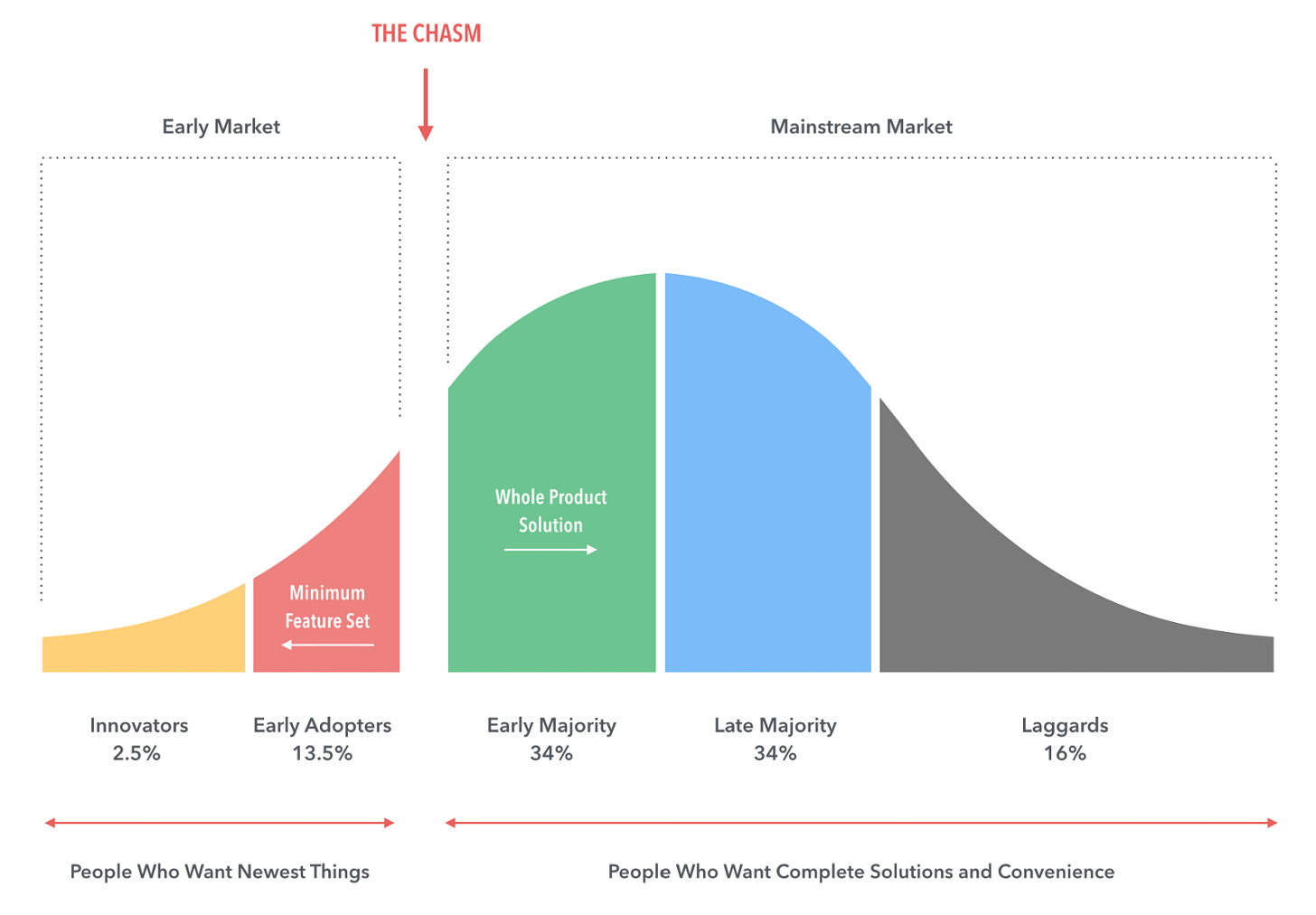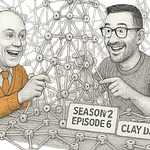Reading time: 12 minutes | Video length: 35 minutes
Hey Cannonballer! Welcome to the first installment of our four-part Cannonball methodology series. If you're tired of generic AI marketing outputs and LinkedIn comments saying, "This post is interesting. Thanks for having such an interesting post," you're in the right place. This training will transform how you use AI tools for marketing by making them true partners rather than generic response generators.
Executive Summary
The Cannonball methodology consists of four components: Focus, Investigate, Narrate, and Deploy (FIND)
The Focus module teaches you how to "warm up the model" with critical context about your product and customers.
You'll learn four essential prompts that create the foundation for all your AI marketing efforts.
This approach works for users at all levels (beginner to expert) and significantly enhances AI output quality.
Your AI tools (particularly Claude and ChatGPT) need specific, detailed context to generate valuable marketing insights.
The FIND Framework: Your Map to AI Marketing Success
The Cannonball methodology is designed to systematically guide you through creating marketing campaigns that connect with your ideal customers using everyday AI tools. Each component builds on the previous one:
Focus - Understand your product's market position and your ideal customers
Investigate - Research and analyze customer data and market opportunities
Narrate - Craft compelling messaging and campaign narratives
Deploy - Execute multi-channel campaigns with precision
Today, we're starting with Focus - the critical foundation. Without this groundwork, even the most sophisticated AI will struggle to generate relevant marketing insights. As we say in the training: be the guide, not the river.
The Four Core Components of Focus
1. Category Understanding
Before you can effectively market your product, you need to understand where it sits on the market maturity curve. This positioning dramatically affects your go-to-market strategy:
Are you in the innovator phase, where market education is essential? Early adopters, where technical detail matters? Or early majority, where streamlined messaging and social proof become critical?
Our Category prompt helps AI tools understand your market position by analyzing:
Current user base size
Available case studies and ROI proof points
Established use cases
Competitive landscape
Example output from our case study: Skimmer.com (pool service software) was identified midway through the early majority phase - a critical insight shaping all subsequent marketing decisions.
2. ICP Definition: Razor-Sharp Ideal Customer Profiles
Generic marketing fails because it targets everyone and connects with no one. The ICP prompt creates a hyper-specific profile of your ideal customer, including:
Company size parameters (revenue, employee count)
Industry specifics and sub-segments
Geographic considerations
Pain points and motivations
Technology stack and adoption patterns
For Skimmer.com, we discovered:
Annual revenue: $200K-$2M
Business size: 2-25 employees with 1-15 field technicians
Focus: Residential pool maintenance (not commercial)
Key pain point: Transitioning from manual systems to digital management
Tech stack: Basic office computers, mobile devices, often using QuickBooks
This level of specificity transforms generic AI outputs into laser-focused marketing guidance.
3. Persona Development: The Human Element
While your ICP defines the business characteristics, personas bring your customers to life as individuals with daily challenges, career journeys, and decision-making patterns.
Our Persona prompt creates detailed buyer personas including:
Professional background and career trajectory
Daily responsibilities and challenges
Decision-making authority and process
Information sources and industry connections
Communication preferences
For Skimmer.com, we developed two key personas:
David Rivers: The Growing Pool Service Owner
Started as a technician with hands-on experience
Currently manages 100-200 pools (up from the 20-30 he serviced)
Struggles with scheduling, route optimization, and technician management
Highly values peer recommendations and Facebook pool service groups
Prefers practical, direct communication about ROI and time savings
Sarah Thompson: The Operations Manager
8-15 years industry experience, progressing from technician to operations
Manages a team of 10-15 technicians servicing 300-600 pools
Holds advanced pool operator certification
Spends 40% of her time on route planning and technician scheduling
Values video content and quick response times from vendors
These detailed personas allow your AI marketing assistant to craft messaging that speaks directly to your customers' situations.
4. Market Context: Competitive Landscape
The final Focus component establishes where your solution sits among alternatives and what makes it uniquely valuable. This context helps AI understand:
Key competitors and alternatives (including non-software solutions)
Your unique value proposition and differentiators
Industry trends and regulatory considerations
Market adoption patterns and barriers
For Skimmer.com, our analysis identified they're competing against:
Manual/paper systems and spreadsheets
Generic business management software
Industry-specific competitors
DIY custom solutions
Understanding this landscape enabled our AI to generate targeted messaging that addresses specific competitive advantages.
The Prompt Library: Your AI Marketing Foundation
Below are the four core prompts we use in the Focus module. I've included notes on when and why to use Claude vs. ChatGPT.
Category Prompt
https://claude.site/artifacts/28d58b67-bf2d-4f2e-8c1d-843ed6b83b8d
ICP Prompt
https://claude.site/artifacts/1fd36ece-dd4d-4f53-a7b9-08f1a5e114a3
Persona Prompt
https://claude.site/artifacts/145cea5f-69ce-48bc-a982-2f931557cc66
Pro Tips: Getting the Most from AI Marketing Tools
Warming Up the Model
Large language models like Claude and ChatGPT operate similarly to humans with the "primary recency effect" - they remember what they read first and most recently, often forgetting details in the middle.
To counter this:
Place the most essential context at the beginning of your prompts
Consider repeating critical information at the end of longer prompts
Build context progressively through conversation rather than in one giant prompt
The Copy-Paste Method
For vertical SaaS companies with specialized products (like Skimmer.com), your website contains invaluable context that AI needs:
Systematically copy key sections from your website (value proposition, features, case studies)
Paste them into your conversation with the AI
Follow with your specific prompt questions
This "warms up" the model with accurate, specific information about your product
Choosing the Right Tool for the Job
Use ChatGPT (especially GPT-4) when:
You need web research capabilities
You want to explore complex market data
You need multiple sources synthesized quickly
Use Claude when:
You need more nuanced, thoughtful analysis
You're developing creative marketing concepts
You want longer, more contextual outputs
You need better reasoning about customer psychology
Consider using ChatGPT for initial research and Claude to craft the final marketing concepts for the best results.
Common Pitfalls to Avoid
The Generic Trap: Giving AI tools vague instructions like "write marketing copy for my product" without proper context.
Scope Confusion: Trying to tackle too much in one prompt instead of building context progressively.
Missing Market Position: Failing to establish where your product sits on the maturity curve before developing messaging.
Assumed Knowledge: Expecting AI to understand industry-specific terms and concepts without explanation.
Skipping Personas: Jumping straight to campaign ideas without establishing who you're talking to.
Next Steps: Preview of The Investigate Module
In our next session, we'll dive into the Investigate module, where you'll learn:
How to use AI to analyze customer data for hidden patterns
Techniques for competitive intelligence gathering
Methods for identifying untapped market opportunities
Tools for validating your market assumptions
Your Focus Challenge
Before our next session, try applying the Focus framework to your product or service:
Use the Category prompt to determine your market maturity position
Define your ICP using the detailed prompt provided
Create at least one detailed buyer persona
Share your results in the comments for feedback (optional)
Questions for Discussion
Where do you currently struggle most when using AI for marketing?
Which of your marketing tasks would benefit most from this focused approach?
What specific industry or product type are you working with?
Remember: The difference between generic AI marketing and breakthrough campaigns isn't in the AI tools themselves—it's in how you prime them with context. Be the guide, not the river.
Join us on Monday, March 10th for Part 2: Investigate, where we'll build on these foundations to uncover actionable marketing insights.















Share this post